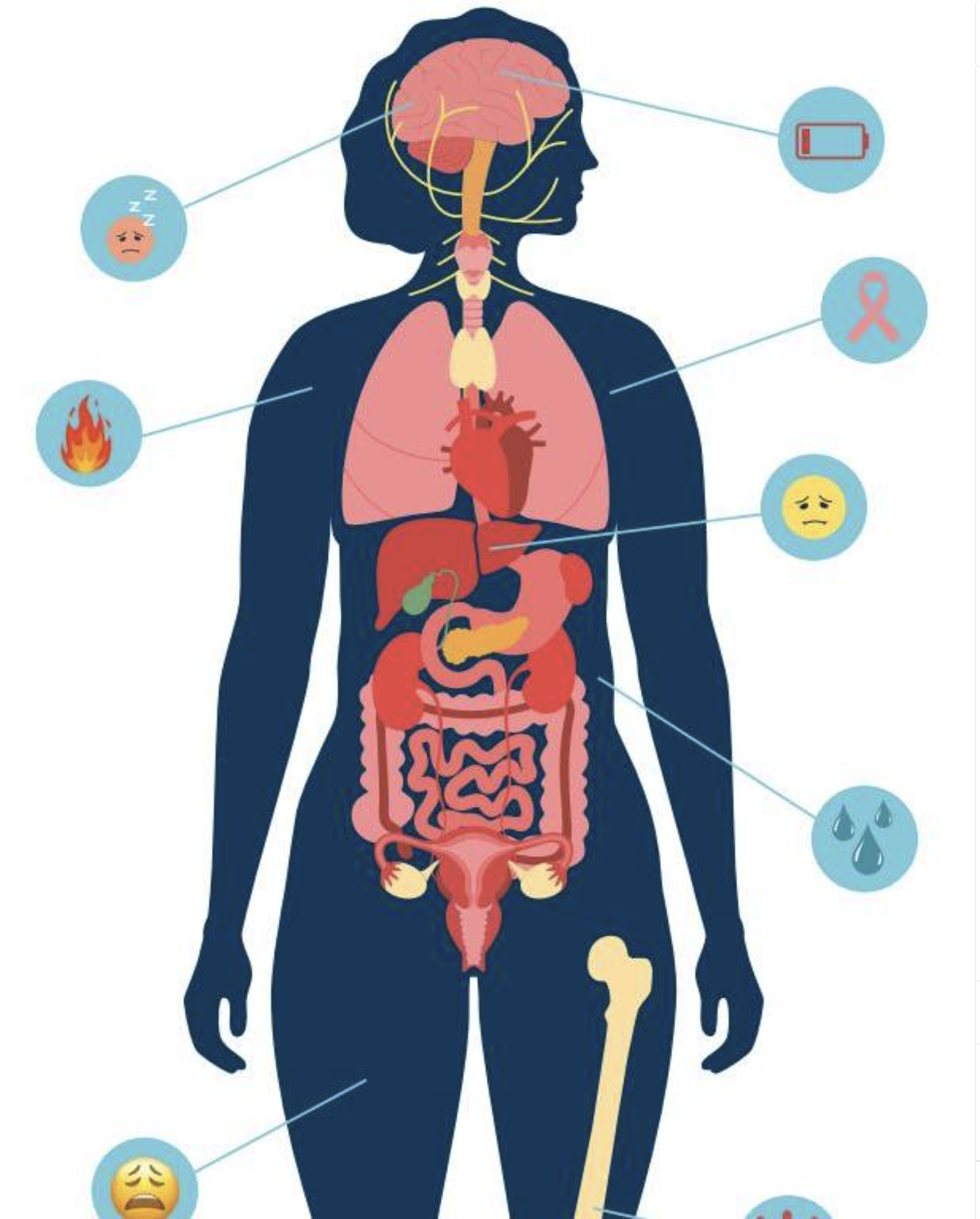Follow along for insights about how alcohol affects women differently, especially in menopause.
Fact #1: Women process alcohol differently than men
Compared to men, women have less water in their blood to dilute alcohol. So the alcohol they do drink is going to be more concentrated. Their brains and organs will likely be exposed to more alcohol for a more extended period— and even moderate alcohol consumption may increase the risk of neurodegeneration (i.e., progressive damage to brain tissues).
Women also have lower levels of key enzymes that metabolize alcohol. That means it stays in their systems for longer.
Combine that with a smaller average body size, where the same amount of
alcohol has a larger impact, and you get the end result: When women drink,
they face higher health risks than men.
But avoiding alcohol doesn’t mean missing out on flavor and fun. Try something like this Hibiscus Sour, created with All The Bitter New Orleans bitters.
Fact #2: Older women process alcohol differently than younger women
Older women are likely to have less body water than younger women. That means drinking the same amount will result in a higher blood alcohol concentration for older women.
On top of that, older women are more likely to be taking prescription medications, which may magnify alcohol’s toxic effects on their organs.
Both good reasons for exploring mocktails in Dry January and beyond. Lemon-lime mocktails made with aromatic bitters are one option.
Fact #3: Women tend to drink more as they age … and things can start to get a little dicey.
Despite the fact that age decreases our ability to tolerate alcohol, midlife and older women are drinking much more on average than previous generations — and having more health problems, including alcohol-related emergency room visits.
Plus, alcohol use can mask — and eventually worsen — other life challenges, such as stress and depression.
And women are more likely than men to relapse to drinking alcohol in response to stress.
One way to stop or slow down your drinking is finding healthier alternatives. Instead of heading to happy hour, get creative by learning how to make alcohol-free beverages.
Fact #4: Alcohol poses body-wide negative effects
For many years, the media promoted the “heart-healthy” or “fun lifestyle” story about alcohol. Not only did they show it as pleasurable and relaxing, they also suggested that red wine could have health benefits, thanks to particular substances in grapes.
Recent research now confirms that this is a myth. We now know that alcohol consumption poses more risks than benefits, even at low doses — and this is especially true for women at midlife and beyond.
Here are a few of those effects:
Loss of brain function: Moderate alcohol consumption may increase a woman’s risk of neurodegeneration.
Higher cancer risk: Alcohol use is linked to many types of cancer, including breast cancer and digestive cancers (e.g., esophageal cancers, gastric cancers, colorectal cancers).
More hot flushes: Alcohol may affect vasomotor regulation, which leads to hot flushes.
Disrupted hormones: Alcohol can disrupt the complex feedback loops that regulate sex hormones, potentially worsening other menopausal symptoms.
Weaker bones: Alcohol intake can lower bone mineral density, increasing a woman’s risk of fractures.
Slowed exercise recovery: Drinking slows glycogen synthesis, which means women have less in the tank for their next workout after they drink. On top of that, their muscles don’t rehydrate as well, and cytokine signals that trigger post-workout muscle repair are altered.
Fragmented sleep: Alcohol suppresses REM, or dreaming, sleep, and leads to worse sleep quality.
Dehydration and water retention: Alcohol has a temporary diuretic (water-flushing) effect, followed by a rebound water-retention effect. This can lead to both thirst and puffiness.
Damaged liver function: Compared to men, it takes less alcohol to cause liver damage and disease in women, and it progresses more quickly.
Convinced yet? Learn more about how nutrition, movement and mindset can benefit you via my wellness newsletter, and if you’re interested in something even more niche, I have a menopause-specific email list focused on better living in that phase of our lives.


Leave a Reply